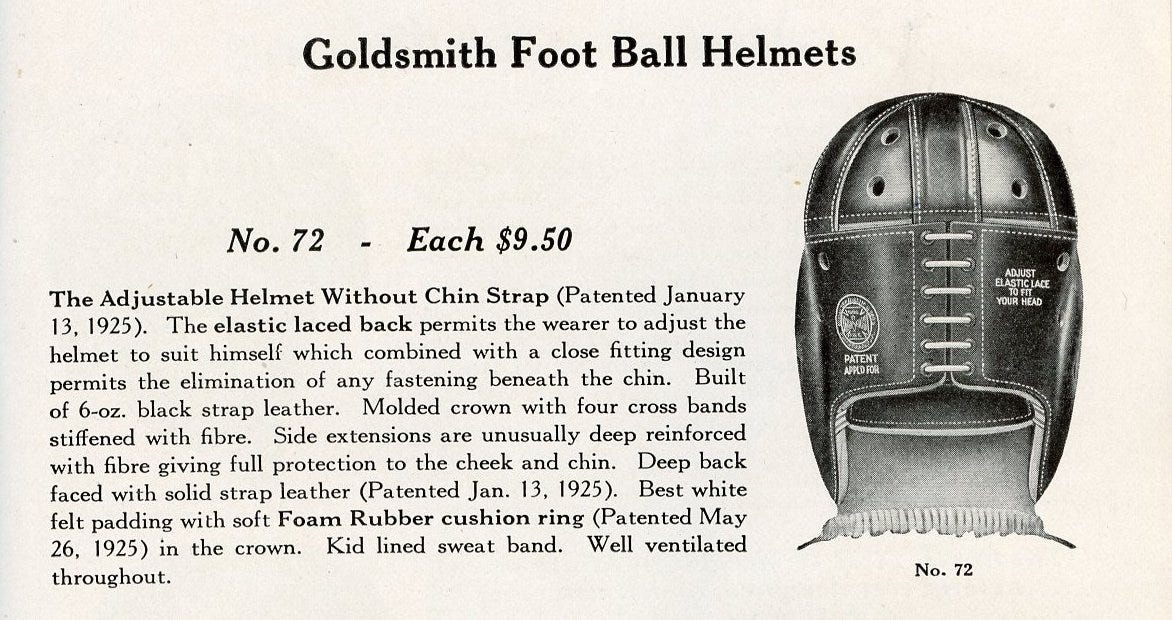Today's Tidbit... Football Helmets Without Chin Straps
Old sporting goods catalogs allow us to understand how football equipment evolved, with some of the equipment's evolutionary paths leading to dead ends. One of those dead ends was GoldSmith's model 72 football helmet, offered in the 1927-28 Fall and Winter Catalog. Like other helmets of the time, they constructed the model 72 of leather, with a molded crown and leather straps crossing the crown. It appears to be an ordinary helmet for the era, with one exception.
Since Riddell introduced plastic helmets in 1940, the chin strap has been one of the primary tools for keeping helmets in place. Whether the chin strap was single or double-anchored, the wearer's chin has always rested in a leather or foam pouch that sat midway along the strap. Before then, football chin straps were thin elastic straps that wrapped under the jaw, not over the chin, as seen in the images below.
The under-the-jaw version of the chin strap did not always keep players' helmets in place, so GoldSmith had the idea of eliminating the chin strap, focusing instead on allowing the wearer to adjust the helmet to fit their head better.
Although they touted the helmet's closer-fitting design, the primary change appears to have been elastic lacing at the back, allowing the wearer to adjust its fit. Why GoldSmith didn't keep the under-the-jaw chin strap to supplement the closer-fitting and the adjusted helmet is anyone's guess. Nevertheless, the adjustable helmet must not have been successful since other manufacturers did not introduce similar products.
While adjusting helmets to the dimensions of the wearer's head arrived with air bladders a few decades later, GoldSmith's idea of adjusting them with elastic straps appears to have been the road less taken, and for a good reason.
Football Archaeology is reader-supported. Click here to buy one of my books or otherwise support the site.



